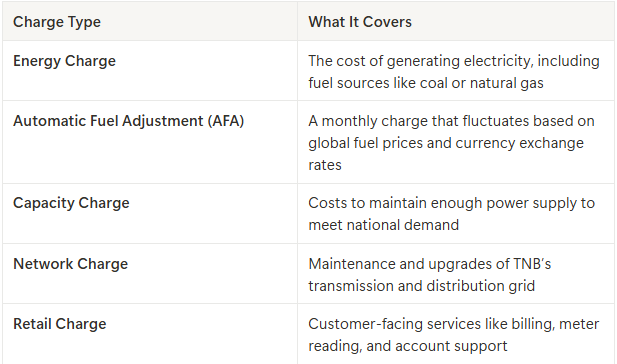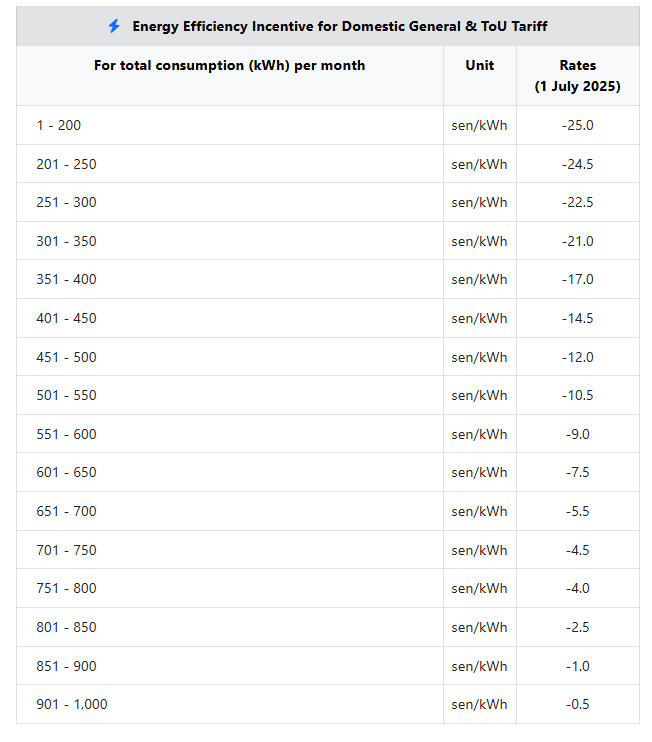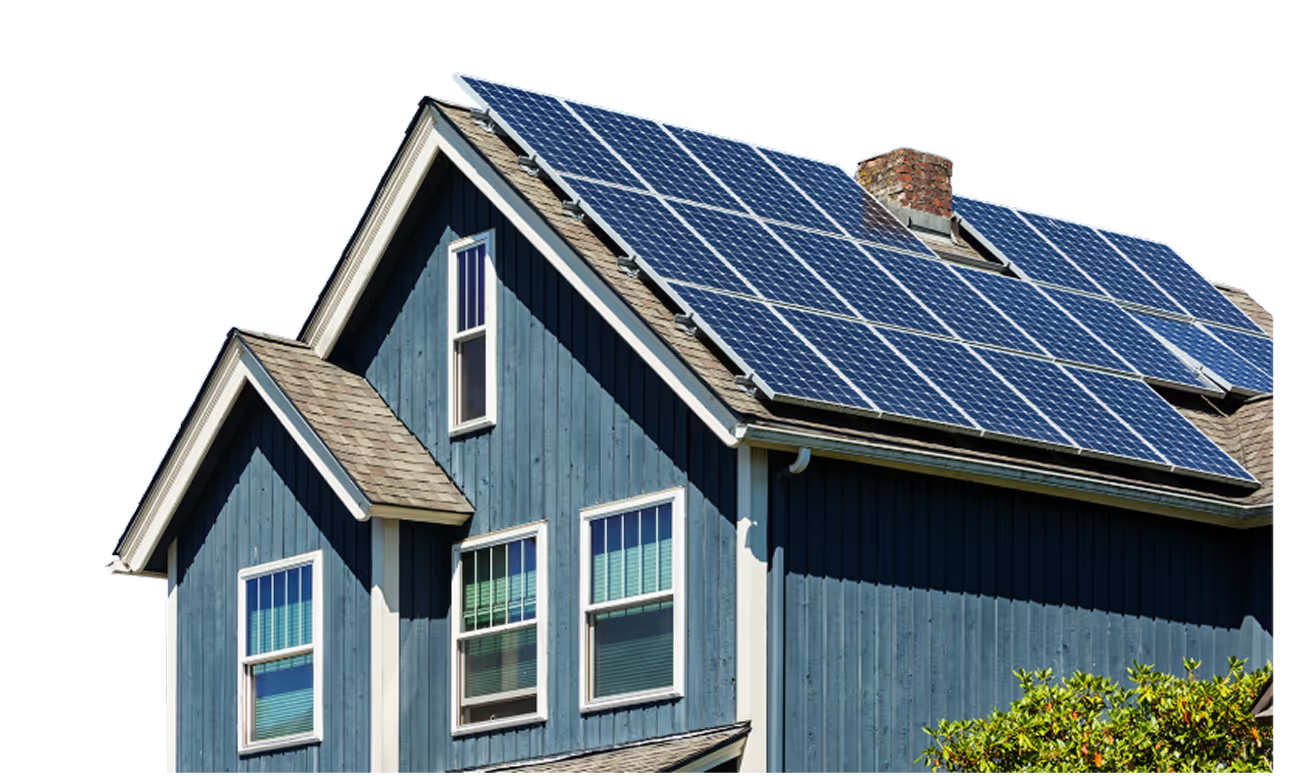.png)
Starting 1 July 2025, Tenaga Nasional Berhad (TNB) introduced a new electricity tariff structure in Peninsular Malaysia. The aim? To create a system that's more transparent, flexible, and aligned with the country's clean energy goals under the National Energy Transition Roadmap (NETR).
But what does that mean for your monthly bill?
Whether you're a homeowner or a tenant, this guide breaks it down in simple term. We'll walk you through key changes — from new pricing tier and monthly fuel charges to Time-of-Use (ToU) rates and energy efficiency incentives. You’ll also learn how switching to solar power can help you avoid future price hikes and enjoy long-term energy savings.
What Is Changing with the New TNB Tariff?
From July 2025, the updated TNB tariff brings in several important changes designed to give consumers more visibility — and more control — over their electricity use.
Here's what's new:
- Detailed Breakdown of Charges
Your bill now clearly separates energy, capacity, network, and retail charges.
- Automatic Fuel Adjustment (AFA)
AFA adjusts your bill every month based on global fuel prices, making costs more reflective of real-time energy markets.
- Expanded Time-of-Use (ToU) Rates
Enjoy lower rates when you shift your usage to off-peak hours — ideal for households with flexible energy habits.
- New Efficiency Rebates
If your household uses less than 1,000 kWh per month, you may quality for monthly bill rebates.
To make transition smoother, TNB will issue a special two-page electricity bill in the July 2025 cycle — called the Transition Bill.
Here's what to expect:
- Page 1: Charges based on the old tariff (for usage before 1 July)
- Page 2: Charges based on the new tariff (for usage after 1 July)

This revised structure is part of a broader push to promote smarter energy use and better household budgeting. By understanding when and how you use electricity, you can actively reduce your bill — or even go one step further by generating your own power through solar.
How Your Electricity Bill Is Now Calculated
Under the new TNB tariff, your monthly bill is broken down into five distinct components. Each one reflects a different part of the electricity supply chain — from generation to customer service.

This transparent breakdown helps you see exactly where your money goes, giving you better insight into how your electricity usage affects your bill.
Breakdown of the New TNB Electricity Tariff (From 1 July 2025)
Under the revised tariff, your electricity rates now depend on how much energy your household uses each month. Here's how the charges apply:
For Households Using 1,500 kWh or Less Per Month
- Energy Charge: 27.03 sen/kWh
- Capacity Charge: 4.55 sen/kWh
- Network Charge: 12.85 sen/kWh
- Retail Charge: RM10/month (Waived if usage is ≤ 600 kWh)
This tier is designed to reward efficient usage — if you keep your monthly consumption under 600 kWh, you won't pay the retail charge at all.
For Households Using More Than 1,500 kWh Per Month
- Energy Charge: 37.03 sen/kWh
- All other charges remain the same
If your household falls into this higher-usage category, you'll see a noticeable increase in your energy costs — particularly when combined with monthly changes from the Automatic Fuel Adjustment (AFA).
Why This Matters:
One of the biggest changes in the new TNB tariff is the Automatic Fuel Adjustment (AFA) — and it's easy to overlook.
Unlike the old ICPT system, which only adjusted tariffs twice a year, the AFA now updates every single month. That means your bill could go up (or down) based on:
- Global fuel prices (like coal or natural gas)
- Currency exchange rates
Even if AFA is RM0.00 today, it could increase sharply without much warning. For high-usage households, this adds another layer of unpredictability — unless you generate your own power through solar and avoid these fuel-linked charges altogether.
Energy Efficiency Incentive (EEI): More Savings for Smart Usage
To promote energy-conscious living, TNB now offers a tiered rebate for households that use 1,000 kWh or less per month.
Here’s how it works:
The less electricity you use, the bigger your rebate — giving you double the savings:
- Lower overall consumptions
- Discounted per-unit charges on top

Who's Eligible?
This incentive is available only to residential customers who stay within the 1,000 kWh monthly limit. If your usage goes above that, you won't qualify for any rebate — even partially.
What About Green Energy Tariffs and Solar?
TNB has also revise its Green Electricity Tariff (GET), making clean energy more accessible. The updated GET premium is now over 80% lower than before — and customers on this plan are exempt from AFA charges for the portion of energy purchased under the green tariff.
That said, GET is still a subscription-based option, which means you're paying a fixed rate for green energy — not reducing your total usage or long-term cost.
If you want full control over your electricity bill, solar remains the most reliable solution. By generating your own power:
- You reduce reliance on the grid
- You protect yourself from both base tariff increases and monthly fuel price fluctuations like AFA
- You enjoy more stable and predictable energy costs over time
How to Take Control of Your Electricity Bill
With fuel-linked charges and shifting tariff rates, monthly bills can feel unpredictable —but you still have options.
Here's how to take back control:
- Stay Under 600 kWh/Month
- This helps you avoid the RM10 Retail Charge and unlocks maximum EEI rebates.
- Switch to Solar
- Rooftop solar lets you take charge of your own energy production. With GetSolar's zero upfront cost Rent-to-Own (RTO) plans, you can start saving from day one — while avoiding the risk of fuel price hikes and long-term tariff increases.
Make the New TNB Tariff Work for You, Not Against You
The new TNB electricity tariff system is designed to promote smarter, more sustainable energy habits. But for higher-usage households, the shift also brings more volatility.
Now's the time to take back control.
Whether it's shifting to off-peak hours, upgrading to energy-efficient appliances, or going solar, a proactive step today can help you avoid surprise bills tomorrow.
Curious how much you could save with solar?
Try our Solar Calculator for an instant personalised quote and see what solar can do for your home.

Rent-to-Own Solar. RM0 Upfront cost. Guaranteed Savings
Immediate ROI




Rent-to-Own Solar. RM0 Upfront cost. Guaranteed Savings
(10-Year RTO plan)
+ 10-Year Free Maintenance







